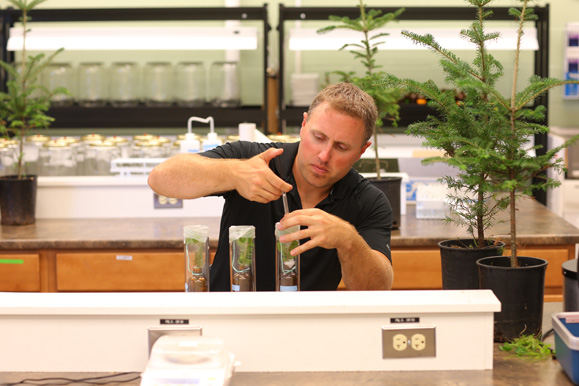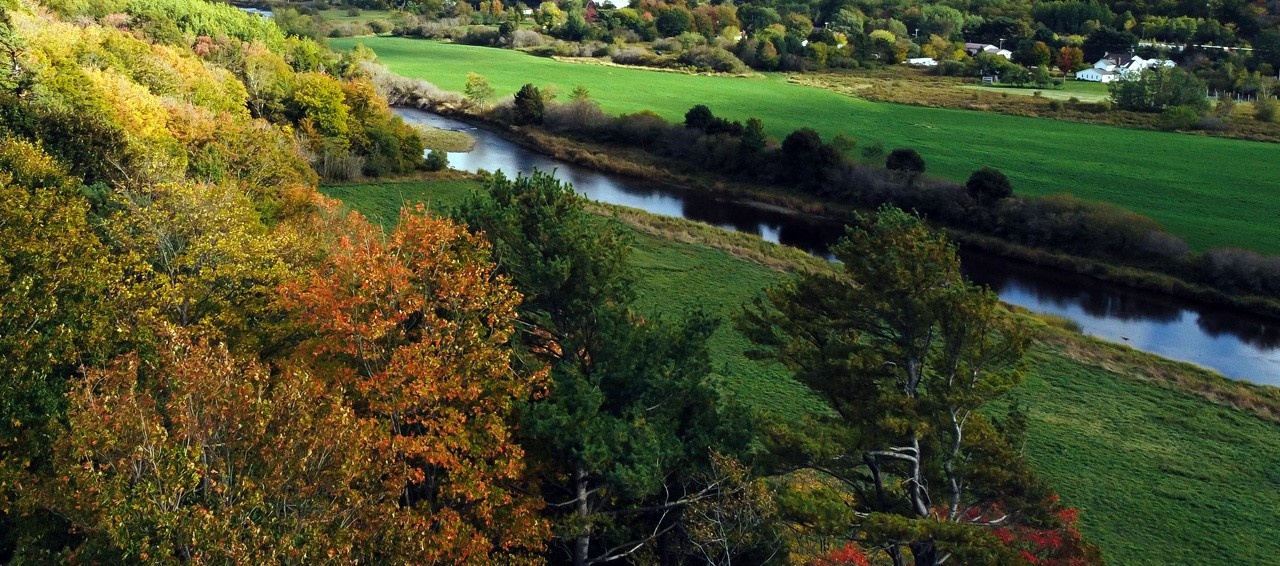News
» Go to news mainO Christmas tree O Christmas tree, how lovely are thy branches
Christmas trees are not only a holiday tradition; in Atlantic Canada they are nearly a $100 million industry.
Dalhousie Faculty of Agriculture Scientist, Dr. Raj Lada and his team at the national Christmas Tree Research Centre (CRC) on Dalhousie’s Agricultural campus, can tell you what makes the perfect Christmas tree and how by developing science-driven innovative technologies they are increasing the sustainability of the industry.
“Solutions need to be found to increase both needle retention and the public’s interest in purchasing a real tree instead of an artificial one,” said Dr. Lada. “If they are not, the Christmas tree industry in Atlantic Canada will surely suffer.”
At the CRC, Lada and his team develop products and technologies to enhance needle retention as well as produce what they call a “SMART Balsam”, which epitomizes an ideal tree - full, sturdy architecture, unique fragrance, blue-green needles, retains its needles for up to three months or more and is pest free.

As a post-doctoral fellow at the Faculty of Agriculture, Mason continues to do research that he hopes will one day directly improve practices for Canadian Christmas tree farmers.
Researchers at the CRC study needle retention as their main focus to understand and intercept the hormone that triggers needle drop. They already know trees are susceptible to stress and are quite likely to drop their needles during stress and aggressive physical movements, some of which are regularly used in the selling of trees such as dragging, shaking, baling and transporting. They have also discovered that LED lighting with a certain spectrum of wavelength can delay needle drop.
“Innovations and technologies developed by the Balsam fir Christmas tree research at Dalhousie University will take the Atlantic Canadian Christmas tree and greenery industry from a survival status to an excel and thrive status, said Jim DeLong, President, SMART Christmas Tree Research Co-operative.
Several innovative technologies have been and will continue to be developed to reduce needle drop and promote needle retention. They have discovered the potential signal involved in postharvest needle loss, the biophysical factors that accelerate postharvest needle drop and some specific environmental and nutritional factors that promote postharvest needle drop. Several clones have also been identified to have high needle retention duration.
“Our scientists are solving real world problems with leading edge technology, in partnership with a wide variety of industries,” said Dean David Gray. “We continue to contribute to the health of our local agricultural economy by helping producers grow Christmas trees that stay fresher, longer thus sustaining this vital industry in Atlantic Canada.”
Interesting Christmas Tree Facts:
·Christmas tree growing and exporting is about a $100 million industry in Atlantic Canada employing 20,000 people.
·Estimated 1.3 million trees exported annually. Trees are shipped across Canada and to USA, Mexico, South & Central America, Caribbean, Japan
·About 1200 NS families involved in the production of Christmas trees.
·Nova Scotia grows more trees than it has people
·Many NS producers send smaller trees (6’-8’ feet) to accompany the Boston Tree. These smaller trees are sent to charities and shelters in Boston. This also takes place in Nova Scotia.
Recent News
- Submissions to TV screens
- Three alumni, four rings
- Upcoming Workplace Wellness activites ‑ May
- A home away from home – Barley Party 2024
- Dalhousie University investigates natural therapeutics to manage cancers of companion animals
- Dr. Derek Lynch honoured for Outstanding Leadership in Organic Science
- Lifting Nova Scotia Workshop
- Truro Students Shine at MacRae Library Research Poster Competition
